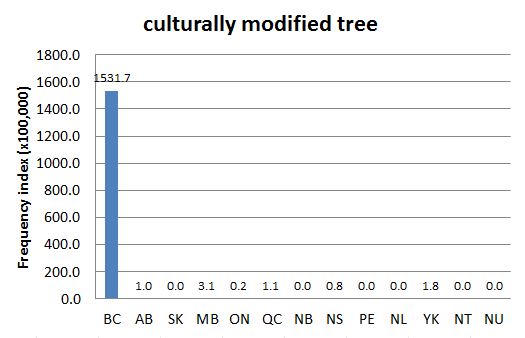DCHP-2
culturally modified tree culturally-modified tree, CMT DCHP-2 (October 2016)
n. — Aboriginal
a tree altered by an Aboriginal person or group as part of the traditional use of the forest.
Type: 4. Culturally Significant — In British Columbia, culturally modified trees (CMTs) are trees that show signs of some of its material having been used by Aboriginal groups for clothing, wood, fibre, food, or the like. In other locations, the term may also include trees showing signs of being shaped by non-Aboriginal people. Trees modified by non-Aboriginal people are recognized for their historical and scientific value if the alteration dates prior to 1846, but they are generally not called culturally modified trees (CMTs of BC 2001: 2). CMTs are valued for scientific and educational purposes, and for the cultural link they provide to the ancestral past of Aboriginal people (ibid: 127).
Culturally modified tree is not unique to Canada, although the term is by far most prevalent in Canada (see Chart 1). Studies on CMTs have also taken place in Australia, Norway, Sweden and the US. However, it appears that a large part of the discourse surrounding CMTs is centred in BC. Within Canada, the term is most prevalent in BC (see Chart 2).References:
- CMTs of BC (2001 [1998]) Cover Text Accessed 29 Dec. 2015
Images:
Chart 1: Internet Domain Search, 23 Aug. 2013
Chart 2: Regional Domain Search, 23 Aug. 2013

